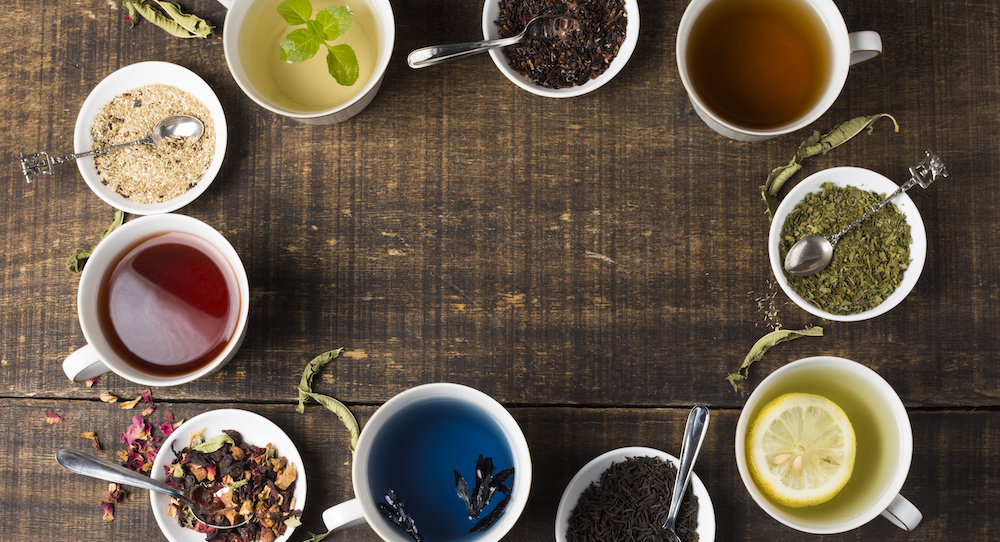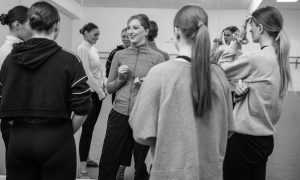“A cup of tea makes everything better.” -Bindi Irwin
Our ancestors knew the secrets of different teas and herbs, and now we know that they mitigate the precursors of diseases with their anti-inflammatory, anti-carcinogenic, antioxidant compounds, and contain traces of vitamins and minerals. We have years of research, yet we still have so much to learn and discover. Here, we diver deeper into popular tea varieties and also highlight some herbs that can help dancers feel their best and fight illness.
Black tea
In a study done in the UK, black tea was shown to provide 65mg of polyphenols per cup (7). These have some of the best antioxidant activity compared to most other reported dietary agents on a daily basis (7). Dancers should note that many plants such as fruits, vegetables, whole grains and legumes also contain beneficial phenolic compounds and can be eaten while drinking their tea to further boost the volume of antioxidants the body is absorbing and thus increasing the beneficial effects. Phenolic compounds naturally occur in teas and plants. “These suppress inflammatory processes, counteract oxidative damage, boost the immune system, and thus, reduce muscle soreness and accelerate recovery in athletes” (8). Phenolic compounds can help dancers who are going through intense rehearsals or classes and are experiencing above average levels of muscular and mental fatigue. Black tea does have caffeine, which isn’t necessarily a bad thing during the day but will affect some people more than others and can impact sleep.
Green tea
Green tea is a source of some of the most active anti-cancer compounds, particularly a flavonoid called epigallocatechin-3-gallate (EGCG). Just one cup can contain 20-35 mg of EGCG. It has also been shown to protect against coronary artery disease and improve measures of blood glucose control (blood sugar) (2). Most importantly for dancers who are at higher risk for stress fractures is that the flavonoids and polyphenols in green tea can improve bone mineral density when drunk regularly (6). It can be simply infused from a tea bag or the powdered form called matcha. Now, there are many delicious varieties of foods using matcha for smoothies, lattes, and cakes. One of my favorite treats from 2024 was matcha cake in London. See if you can find it in your area.
Kombucha
Kombucha is a fermented and sweetened black or green tea. It can be infused with a number of different fruit flavors as well as ginger and mint to give it a bit of a kick and increase the health benefits, as these are known to help with digestion and support the good microbes naturally present in a healthy gut. Kombucha’s health benefits are mostly derived from the anti-cancer fighting properties of polyphenols in the tea itself and the fermentation process which supports digestive health through glucuronic acid and the beneficial microbes present when the tea is fermented with a scoby (5), which is simply a mixture of yeast and beneficial microbes.
As alcohol consumption continues to decline in the UK (4), consumers are looking for tasty alternatives that don’t leave them feeling left out or bored. Market trends show that kombucha is increasingly popular to drink in the evenings as an alternative to alcohol (3).
Kombucha is tangy, fizzy and just a little bit sweet but not as sweet as soft drinks. Some store-bought kombucha can potentially have 0.5% alcohol by volume (ABV) due to the fermentation process, but many manufacturers take the alcohol out. Homemade kombucha can potentially have up to 2.5% ABV, but it varies. While far less than a typical beer, dancers should still research whether their favorite brand of kombucha could have traces of alcohol in it. Kombucha does have a small amount of caffeine because green and black tea both have caffeine. Sources range from 5-15mg caffeine per 240 ml, which is small compared to the average of 50mg in a cup of black tea.
Herbal teas that can help dancers
Ginger and peppermint: Promotes gastric motility, improves digestion, decreases nausea and can help reduce flatulence.
Echinacea: One of the best herbs for boosting the immune system and preventing illness. Good in cases of bronchial infections and sore throats (9).
Feverfew: One of the best natural remedies for migraines. Most effective if the tea is drunk up to 3 times a day when one feels a migraine coming on. It can be quite bitter, so best to pair it with another tea or fruit infusion or a bit of honey. Lemon balm works well to improve the taste.
Yarrow, red clover, raspberry leaf and nettle tea infused together can help with painful or very long menstrual cycles. Add some ginger and cramp bark for painful cramps. Lady’s mantle can also be effective for women’s cycles and can even help with mood and irritability.
This article is not intended to provide medical advice. Please consult your medical provider for your individual needs.

By Emily C. Harrison MS, RDN, LDN of Nutrition for Great Performances.
Emily Cook Harrison MS, RD, LD
Emily is a registered dietitian and holds both a bachelor’s and master’s degree in nutrition from Georgia State University, USA. Her master’s thesis research was on elite level ballet dancers and nutrition and she has experience providing nutrition services for weight management, sports nutrition, disordered eating, disease prevention, and food allergies. Emily was a professional dancer for eleven years with the Atlanta Ballet and several other companies. She is a dance educator and the mother of two young children. She now runs the Centre for Dance Nutrition and Healthy Lifestyles. She can be reached at emily@dancernutrition.com
www.dancernutrition.com
Sources:
1. Mateljan G. The World’s Healthiest Foods. 2007
2. Liu K,et al. Effect of green tea on glucose control and insulin sensitivity: a meta-analysis of 17 randomized controlled trials. Am J Clin Nutr. 2013 Aug;98(2):340-8. doi: 10.3945/ajcn.112.052746. Epub 2013 Jun 26. PMID: 23803878. https://pubmed.ncbi.nlm.nih.gov/23803878/
3. https://www.teaandcoffee.net/feature/32192/kombucha-eyes-growth-in-new-markets/
5. https://www.sciencedirect.com/science/article/abs/pii/S0168160522002550?via%3Dihub
6. Lee DB, et al. Relationship between Regular Green Tea Intake and Osteoporosis in Korean Postmenopausal Women: A Nationwide Study. Nutrients. 2021 Dec 26;14(1):87. doi: 10.3390/nu14010087. PMID: 35010962; PMCID: PMC8746552.
7. Rechner AR,et al. Black tea represents a major source of dietary phenolics among regular tea drinkers. Free Radic Res. 2002 Oct;36(10):1127-35. doi: 10.1080/1071576021000006707. PMID: 12516885.
8. Gonçalves AC,et al. Effects of Functional Phenolics Dietary Supplementation on Athletes’ Performance and Recovery: A Review. Int J Mol Sci. 2022 Apr 22;23(9):4652. doi: 10.3390/ijms23094652. PMID: 35563043; PMCID: PMC9102074.
9. Gladstar R. Herbs for common ailments. 2014














